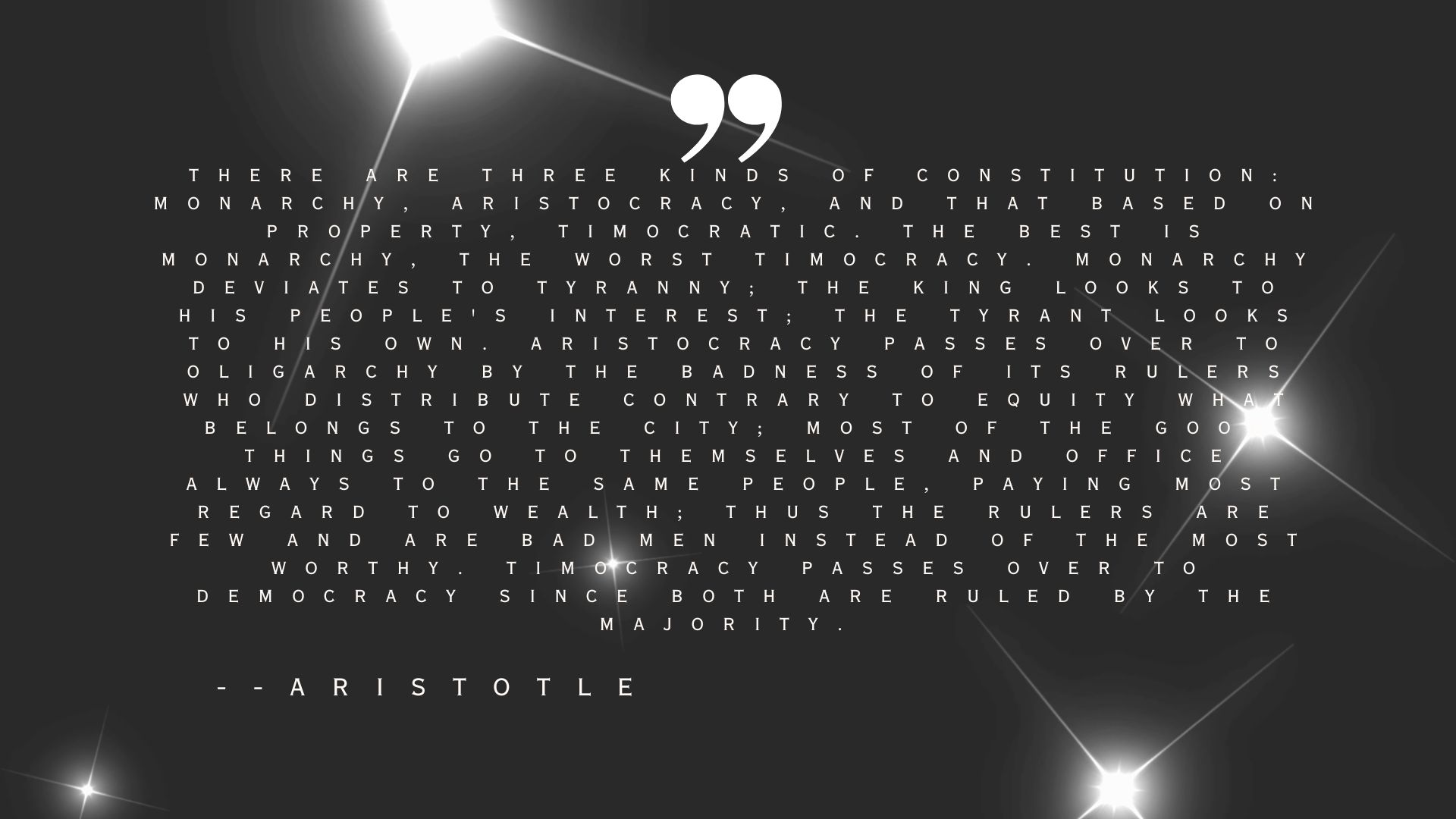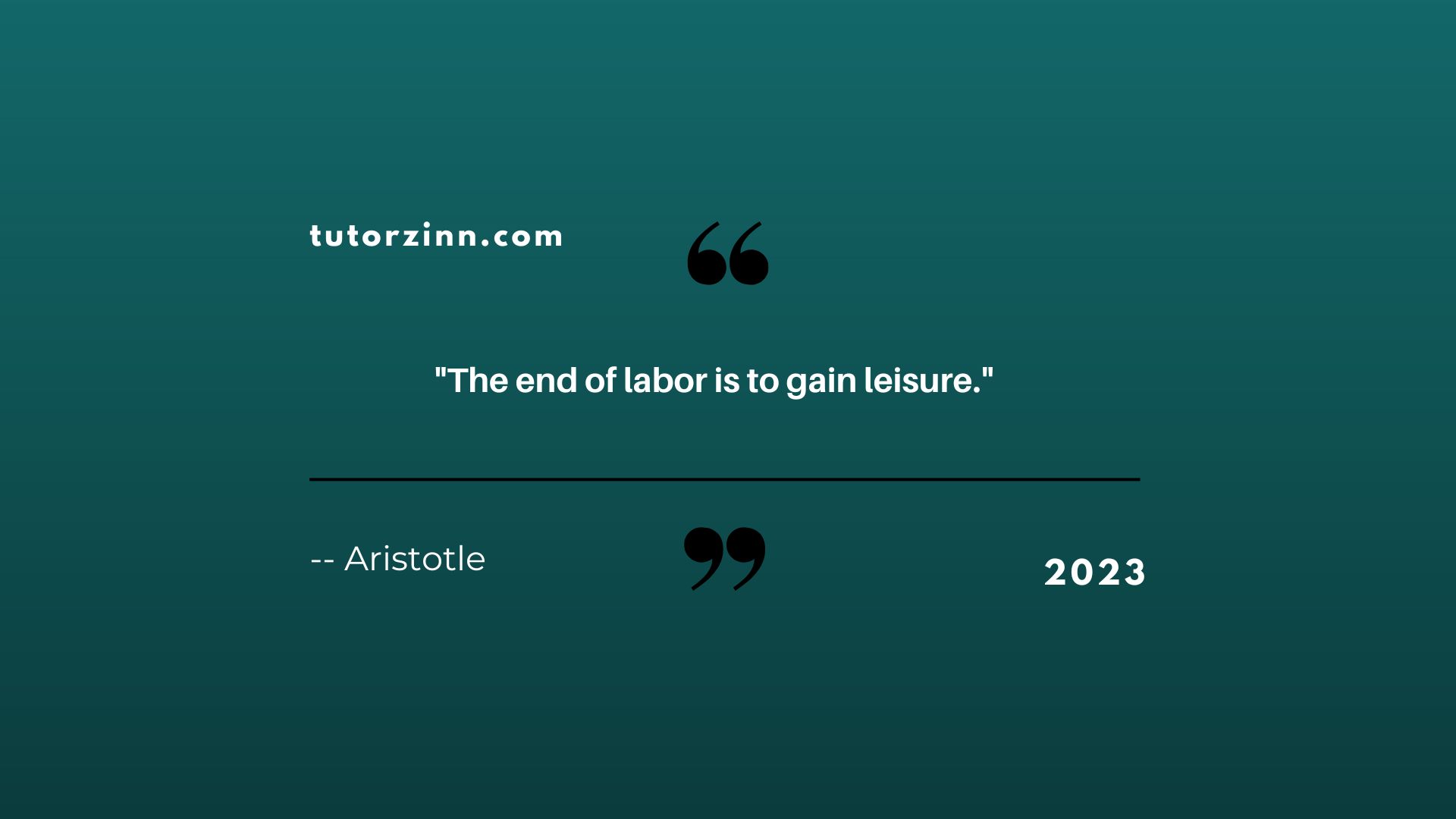There are three kinds of constitution: monarchy, aristocracy, and that based on property, timocratic. The best is monarchy, the worst timocracy. Monarchy deviates to tyranny; the king looks to his people’s interest; the tyrant looks to his own. Aristocracy passes over to oligarchy by the badness of its rulers who distribute contrary to equity what belongs to the city; most of the good things go to themselves and office always to the same people, paying most regard to wealth; thus the rulers are few and are bad men instead of the most worthy. Timocracy passes over to democracy since both are ruled by the majority.
Aristotle___
The Three Kinds of Constitution: Monarchy, Aristocracy, and Timocracy
In the field of politics and governance, the concept of the constitution has always been a hot topic for debate. Ancient Greek philosopher Aristotle, in his book Politics, argued that there are three main types of constitutions: monarchy, aristocracy, and timocracy. In this article, we will explore each type of constitution in detail and discuss their strengths and weaknesses.
Monarchy: The Best and the Worst
Monarchy is a form of government where a single individual, usually a king or queen, holds all the power. According to Aristotle, monarchy is the best form of government, as long as the king rules in the best interest of his people. However, if the king becomes tyrannical and only looks out for his own interest, monarchy can quickly devolve into tyranny, which Aristotle considered the worst form of government.
Aristocracy: From Good to Bad
Aristocracy is a form of government where a small group of wealthy and powerful individuals rule. Aristotle believed that aristocracy is a good form of government, as long as the rulers are just and distribute resources equitably among the people. However, if the rulers become corrupt and distribute resources unfairly, aristocracy can quickly become oligarchy, where only a few individuals hold all the power and wealth.
Timocracy: The Slippery Slope to Democracy
Timocracy is a form of government where power is based on property ownership. Those who own the most property have the most power. Aristotle considered timocracy the worst form of government after tyranny because it often leads to democracy, where the majority rules. In timocracy, the rulers are typically wealthy individuals who have little concern for the common good, which can lead to social unrest and political instability.
Conclusion
In summary, Aristotle’s classification of constitutions into monarchy, aristocracy, and timocracy provides valuable insights into the strengths and weaknesses of different forms of government. While monarchy is the best form of government if the king rules justly, it can quickly devolve into tyranny if the king becomes corrupt. Similarly, aristocracy is a good form of government if the rulers are just, but it can quickly turn into oligarchy if the rulers become corrupt. Finally, timocracy is a slippery slope to democracy and often leads to political instability and social unrest. By understanding these different forms of government, we can make informed decisions about the kind of government that will best serve our communities.




